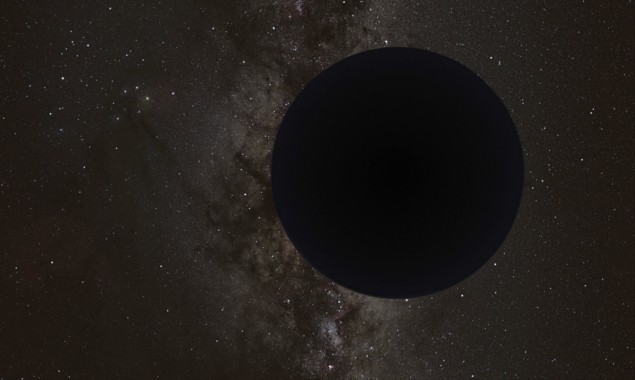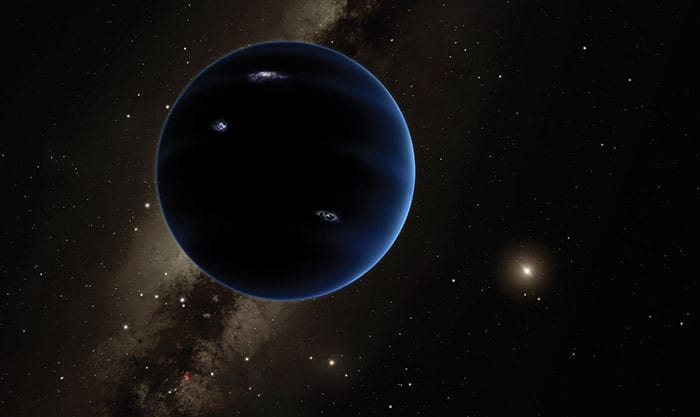
Computer simulations by astronomers in the US have presented a new clue for researchers hunting a hypothesised planet hiding in the far reaches of the solar system. The modelling suggests that searching for “Trans-Neptunian Objects”, or TNOs, in certain orbits could shed light on whether a so-called “Planet Nine” exists beyond Neptune.
The possible presence of a ninth planet in our solar system was first proposed more than five years ago based on the orbital characteristics of certain objects travelling around the Sun at immense distances. Yet despite ongoing searches, no direct detection of the distant world has been made so far.
In their latest work, Kalee Anderson and Nathan Kaib, both at the University of Oklahoma in the US, modelled the evolution of the solar system – including the four giant planets as well as a million “particles” representing the disc of icy bodies in the Kuiper Belt beyond Neptune – over the course of four billion years, up to the present day.
One of their models simulated our familiar eight-planet solar system while the others contained a possible ninth planet with various orbital permutations. “As each simulation ran, the million particles ‘felt’ the gravitational effects of the planets as Neptune migrated through the disc,” Anderson told Physics World. “This process scattered this disc into a simulated present-day Kuiper Belt that we could compare to the actual observed Kuiper Belt and the other simulations.”
Observational test
In the models incorporating a ninth planet, the researchers found that a conspicuous collection of far-off bodies tend to congregate in orbits that have a relatively shallow incline to the plane of the solar system. These objects would be at huge distances from the Sun, never getting closer to our star than 40-50 times the Earth-Sun distance. Crucially, this gathering of TNOs did not materialise in low-inclination orbits in the simulation of an eight-planet solar system. The results therefore suggest that a search for real-life, low-inclination orbit TNOs in faraway regions might offer insights into the presence, or not, of the hypothetical Planet Nine.
These kinds of predictions are critical to testing proposed Planet Nine scenarios
Kat Volk
“This is a very nice study that produces observationally testable predictions for the consequences of an additional large unseen planet in the distant solar system,” says Kat Volk, a planetary scientist at the University of Arizona who works on the Outer Solar System Origins Survey (OSSOS) project, and who was not involved in the new research. “These kinds of predictions are critical to testing proposed Planet Nine scenarios,” she adds.
According to Volk, current surveys of the outer solar system can discover distant bodies with the kinds of orbits identified in the new study, but they face a challenge because of how faint those TNOs would be. And as today’s surveys usually strike a balance between how deep they peer into our planetary neighbourhood and how much of the sky they cover, they would also only find a small selection of the objects in question. Pathway to Planet Nine
To test which of the new simulations is closest to reality, and therefore explore whether there really is a ninth planet in the solar system, researchers will need a larger sample to examine. That could come from the Vera C. Rubin Observatory’s Legacy Survey of Space and Time (LSST), which will begin observations in 2023.
“The observatory’s 10-year survey is going to be revolutionary because it should be able to detect TNOs almost as faint as dedicated small surveys, like OSSOS, but also cover a huge percentage of the sky,” adds Volk. “I think it is likely that LSST will give us the number of TNOs that Anderson and Kaib estimate that they need to distinguish between their models.”



